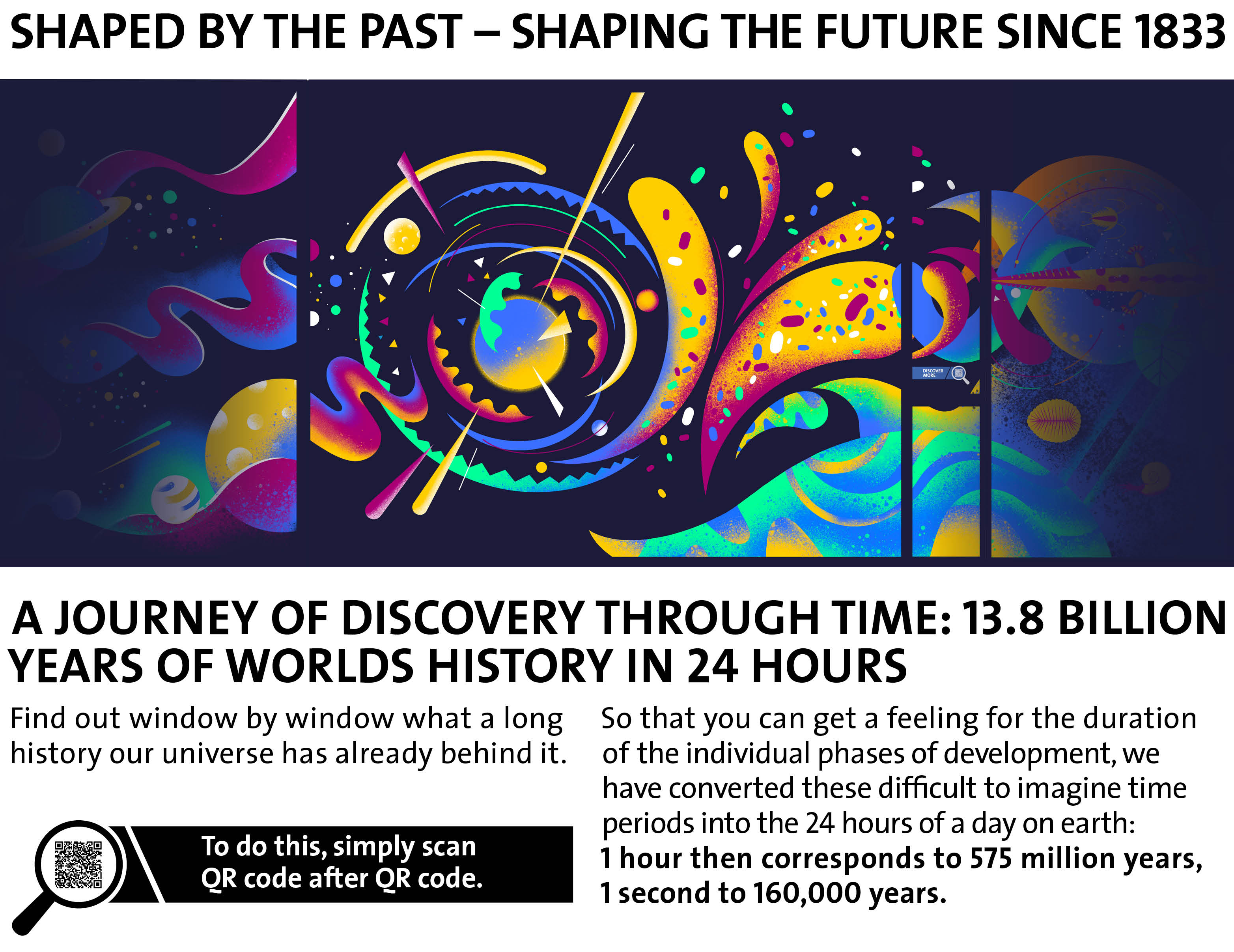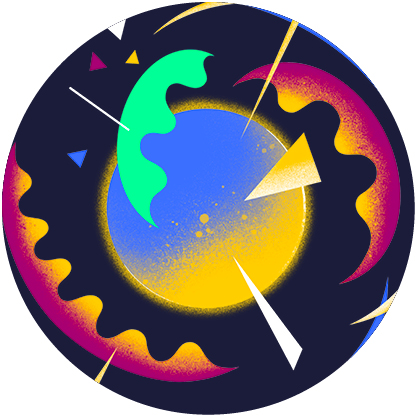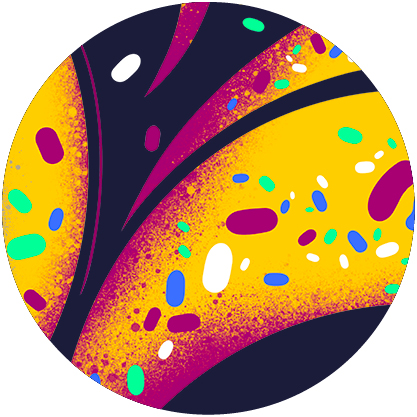Hello, is anyone there?

4:01 p.m. – 5:34 p.m.
The birth of the earth. And life after that
Shortly after the Sun, the Earth and other planets in our solar system are formed. 4.53 billion years ago, an asteroid collided with the earth - as a result, the earth's moon was formed, and the earth was given its current shape and orbit. The first prerequisites for the creation of life are thus fulfilled. The first forms of life emerge: The earliest are molecular structures that replicate themselves and increase their complexity through natural selection. Single-celled organisms (cyanobacteria) produce huge amounts of oxygen in the ocean. This changes the earth's atmosphere - the ideal prerequisite for oxygen-burning life forms is thus given. But it will take a long time (until about 10:37 p.m.) until the first multicellular organisms appear.

4:01 p.m
4.54 billion years ago: The earth was formed.

5:00 p.m.
4 billion years ago: The first life forms develop.

Stromatolites are specially layered rock-like structures that are formed by cyanobacteria. The cyanobacteria can perceive the direction of the incidence of light and represent the beginning of photosynthesis - 3.7 billion years ago.